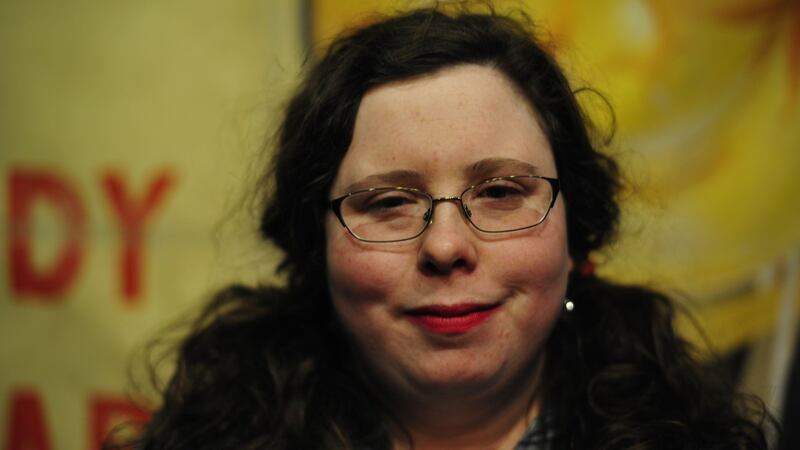Last month, Lena Dunham's Girls had its last episode. The cultural impact of the show on television is similar to the impact Frozen had on animated features (quick – young girls are a huge audience: make them things to watch) and Bridesmaids had on woman-led comedy features (quick – women are a huge cinema audience: make them things to watch). It is impossible to ignore the increase in female-led television, which is occurring at a time when watching television is an endless competitive sport.
Globally, there has been a widening of what a story on television is, and inevitably that leads to a diversity beyond the traditional male-driven stories that have typified much of the history of television. That expansion has led to more female voices coming to the fore.
Over the years, several women television writers and comedians have told me that they have been in rooms with commissioners and channel heads where they have been told that a broadcaster already has one woman-driven comedy, so come back another time. This line would never be delivered to a male writer. Perhaps the greatest and most overdue leap for contemporary television is that “female” ceases to be a genre.
The personal has also become a precinct. “Smaller”, character-driven shows – ones that don’t have colossal budgets and a bombastic feel – are breaking out, and it is in this space that female-led voices are winning, with an indie feel across new shows regardless of whether they’re streamed or televised.

In Ireland, women writers are creating some of the most interesting material, and even within this newness of voices and storytellers on television there is a further homing in on the "local". Stefanie Preissner's Can't Cope, Won't Cope was set in Dublin but with a Cork accent. Alison Spittle's upcoming RTÉ2 sitcom, Nowhere Fast, is set in the midlands. The Young Offenders, which is being adapted from film to small screen by the BBC, is another Cork-focused story.
Irish women abroad
There have been further successes with the BBC for Irish women writers, with BBC3 adapting Eva O'Connor's play about anorexia, Overshadowed, into an eight-part short-form series to be written by O'Connor and Hildegard Ryan. The online-only BBC3 is proving to be a promising new outlet for Irish comedy, with Can't Cope, Won't Cope also picked up by the channel. It probably doesn't hurt that channel controller Damian Kavanagh is a Dubliner.
The fragmentation of broadcasting and platforms also allows for both diversity and risk. The risks that companies such as Netflix and Amazon can take, the shift in what it means to accumulate an audience on these platforms – with a focus on clusters of viewers everywhere as opposed to a large audience in one place, which traditionally hampered experimentation and risk in terrestrial broadcasters – and the creative freedom this allows writers inevitably leads to more interesting stuff.
Subscription models, as HBO has shown, have always yielded programmes that are smarter and more sophisticated. When a show does not have to be made for the masses, it can occupy a more interesting space.
There is also a more nuanced structural change within series and episodes themselves. With streaming, the pace of programmes has changed. Shows such as Transparent are not slaves to the pre-ad-break hook in the same way that programmes broadcast on channels that carry advertising are. Television audiences have traditionally been conditioned around a specific advertisement-driven programme structure, with the episode usually broken up into five parts. It begins with a teaser leading into act one and a break, followed by act two and a hook before the ad, followed by act three and a hook before the ad, followed by act four, five and a cliffhanger.
Streaming has broken that structure. Now scenes can exist on their own creative merit. The dream sequences of The Sopranos were seen as groundbreaking, and many of the programmes we watch now have an equally indie feel. Jill Soloway's latest series, I Love Dick, for Amazon, feels less like a television show and more like independent American cinema.
Numbers game
Of course, it’s not all about critical acclaim – it’s also about the numbers. But the success of new women television storytellers isn’t a fad, it’s an opening-up. With money now following diverse voices, the Irish Film Board’s announcement at the end of 2015 that it is aiming for 50-50 gender parity in funding over the following three years will inevitably see more women funded, and will also give them encouragement to go for funding. While most of this will be in film, people who write for film also write for television, and many production companies make both.
In a way, the genie is out of the bottle for this new era of female-led television. The comedy we are watching now feels almost post-sitcom. Sharon Horgan, for example, makes stealth drama, and many of the successful shows we loosely label comedy lean more heavily on drama, emotion, social context – race, feminism, millennial ennui – and character exploration than gags and canned laughter. The idea of a traditional mainstream network sitcom now feels old-fashioned. They might still get made, but with so many options available to viewers, audiences will retreat into other silos, where stories that appeal directly to them, or stories and settings and characters they have rarely seen on television up until now, feel far more interesting and relevant.












